 W
WThe GP2X Caanoo, more commonly known as Caanoo, stylized CAANOO, is an open source, Linux-based handheld video game console and portable media player developed by the South Korean company GamePark Holdings. It was released on August 16, 2010 in South Korea and were also sold throughout Europe. It is the successor to the GP2X Wiz, and was showcased at the Electronic Entertainment Expo 2010. The device's launch price was about US$150, which didn't reach any retail stores in North America.
 W
WThe Dingoo is a handheld gaming console that supports music and video playback and open game development. The system features an on-board radio and recording program. It is available to consumers in three colors: white, black, and pink. It was released in February 2009 and has since sold over 1 million units.
 W
WThe FC Twin is a Famiclone that can play Nintendo Entertainment System and Super NES games. Manufactured by Qishenglong (奇胜隆), the system has been well-received due to the increasing scarcity of the original hardware. It is distributed by Yobo Gameware in the U.S. and Gametech in Japan.
 W
WThe Game Wave Family Entertainment System, commonly abbreviated as Game Wave, is a hybrid DVD player and home video game console manufactured by ZAPiT Games. It was first released in Canada in October 2005. It is part of the seventh generation of video game consoles. It was released in the United States at an MSRP of $99. The Game Wave saved manufacturing costs by adding an Altera MAX II Complex Programmable Logic Device to an inexpensive DVD player. It was packaged with the pack-in game 4 Degrees: The Arc of Trivia, Vol. 1.
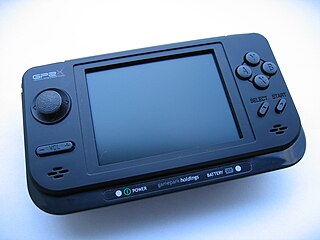 W
WThe GP2X is a Linux-based handheld video game console and portable media player developed by South Korean company GamePark Holdings. It was released on November 10, 2005, in South Korea only.
 W
WThe GP2X Wiz is a handheld game console and portable media player developed by South Korean company GamePark Holdings running a Linux kernel-based embedded operating system. It was released on May 12, 2009, and was also the first console from both Game Park and Game Park Holdings to be also released outside South Korea. It is the successor to the GP2X.
 W
WThe HyperScan is a home video game console from the toy company Mattel. It used radio frequency identification (RFID) along with traditional video game technology. The included game was rated "T" and the remaining titles were rated "E10+" by the ESRB. The console used UDF format CD-ROMs. The HyperScan has two controller ports, as well as a 13.56 MHz RFID scanner that reads and writes to the "cards" which, in turn, activate features in and save data from the game. Players are able to enhance the abilities of their characters by scanning cards. Games retailed for $19.99 and the console itself for $69.99 at launch, but at the end of its very short lifespan, prices of the system were down to $9.99, the games $1.99, and booster packs $0.99.
 W
WThe MoMA Eve was a handheld gaming console presented by Via at E3 2004. It was supposed to play PC games as well as games designed for it. The player would have had to purchase a SIM Card to play purchased games on it. The buttons look like the buttons on an average video game controller with a D-pad on the left, four action buttons on the right, one Start button in the middle, and two analog sticks. It had a 533 MHz processor, a 20GB hard drive for games and movies, Wi-Fi, and a CF slot. It also had TV-OUT. The console encountered a trademark issue in mid-2004. The system was never released and is considered vaporware.
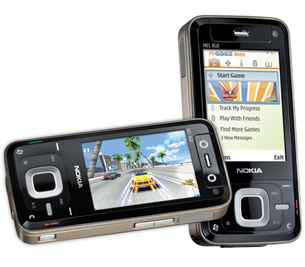 W
WThe N-Gage service was a mobile gaming platform from Nokia that was available for several Nokia smartphones running on S60 (Symbian). N-Gage provided numerous games with 3D graphics into an application featuring online and social features. It takes its name from the original 2003 N-Gage gaming device, which it succeeded.
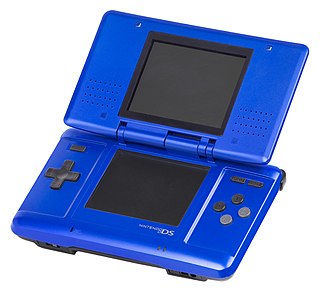 W
WThe Nintendo DS is a handheld game console produced by Nintendo, released globally across 2004 and 2005. The DS, an initialism for "Developers' System" or "Dual Screen", introduced distinctive new features to handheld games: two LCD screens working in tandem, a built-in microphone and support for wireless connectivity. Both screens are encompassed within a clamshell design similar to the Game Boy Advance SP. The Nintendo DS also features the ability for multiple DS consoles to directly interact with each other over Wi-Fi within a short range without the need to connect to an existing wireless network. Alternatively, they could interact online using the now-defunct Nintendo Wi-Fi Connection service. Its main competitor was Sony's PlayStation Portable during the seventh generation of video game consoles.
 W
WThe Pandora is a operating system, handheld game console and mobile personal computer originally released in 2010. It is designed to take advantage of existing free and open-source software and to be a target for homebrew development. It includes several features that no handheld game consoles have previously had, making it a cross between a handheld game console and a subnotebook. It is developed and produced by OpenPandora, which is made up of former distributors and community members of the GP32 and GP2X handhelds. Until 2013, multiple batches of slightly updated Pandora variants were produced. In 2014 the development of a redesigned and upgraded successor, called DragonBox Pyra, was started.
 W
WThe PlayStation 3 (PS3) is a home video game console developed by Sony Computer Entertainment. It is the successor to PlayStation 2, and is part of the PlayStation brand of consoles. It was first released on November 11, 2006, in Japan, November 17, 2006, in North America, and March 23, 2007, in Europe and Australia. The PlayStation 3 competed primarily against Microsoft's Xbox 360 and Nintendo's Wii as part of the seventh generation of video game consoles.
 W
WThe PlayStation Portable (PSP) is a handheld game console developed and marketed by Sony Computer Entertainment. It was first released in Japan on December 12, 2004, in North America on March 24, 2005, and in PAL regions on September 1, 2005, and is the first handheld installment in the PlayStation line of consoles. As a seventh generation console it competed with the Nintendo DS.
 W
WThe Retro Duo is a handheld game console developed by Retro-Bit and distributed by Innex, Inc. It plays game cartridges for the Nintendo Entertainment System and Super Nintendo Entertainment System. It plays North American, European and Japanese games and has the highest compatibility of any other clone system. S-video is compatible when playing SNES games. The console is not licensed by Nintendo and it’s not fully compatible with every game released for the two game systems; however, the majority of games function properly. While it has only been released in Canada and the United States, it can still be used in Europe and Japan with a power plug adapter. The console is compatible with official and third party SNES controllers.
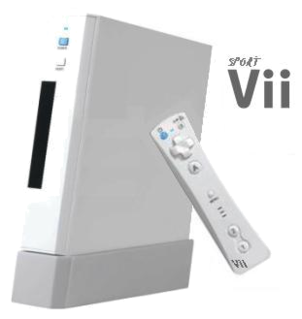 W
WThe Vii is a Shanzhai video game console similar in design to Nintendo's Wii. It was originally released in China in 2007. The Vii was not intended to be a seventh-generation console like the Wii, and was instead part of the dedicated console genre of inexpensive consoles with built-in games.
 W
WThe Wii is a home video game console developed and marketed by Nintendo. It was first released on November 19, 2006, in North America and in December 2006 for most other regions of the world. It is Nintendo's fifth major home game console, following the GameCube and is a seventh generation home console alongside Microsoft's Xbox 360 and Sony's PlayStation 3.
 W
WXbox is a video gaming brand created and owned by Microsoft. The brand consists of five video game consoles, as well as applications (games), streaming services, an online service by the name of Xbox network, and the development arm by the name of Xbox Game Studios. The brand was first introduced in the United States in November 2001, with the launch of the original Xbox console.
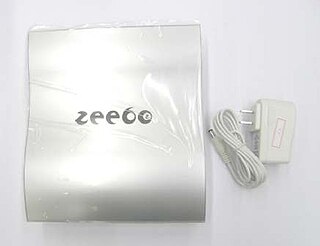 W
WThe Zeebo is a 3G-enabled entertainment and education system from Zeebo Inc. It enabled users to play video games, and also connect to the Internet, communicate online and run educational applications. The Zeebo was targeted at developing markets such as Brazil and Mexico. Zeebo Inc. described the Zeebo as bringing "the fun and excitement of interactive entertainment and education to those who—until now—have had little or no access to such technology."